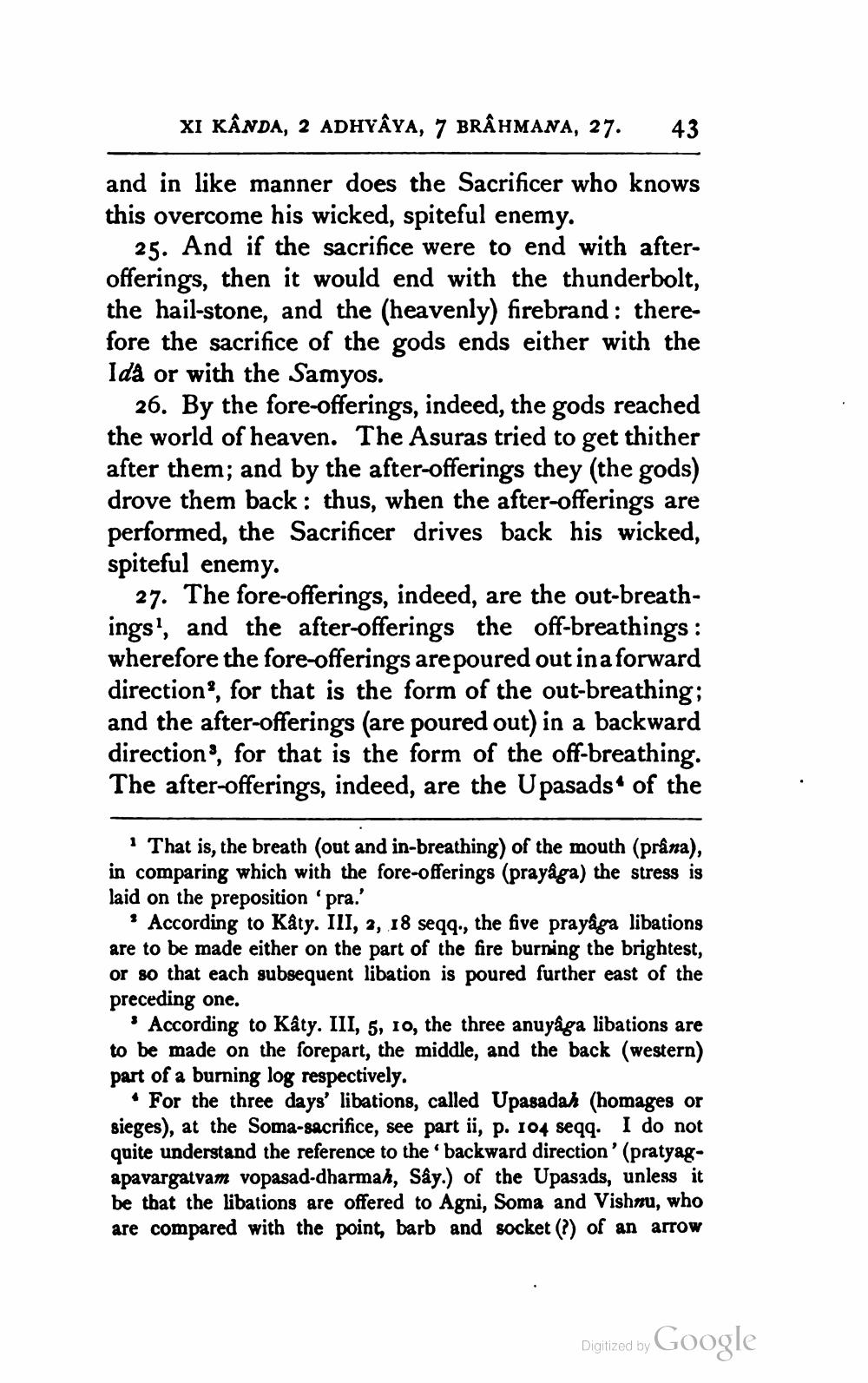________________
XI KÂNDA, 2 ADHYAYA, 7 BRÂHMANA, 27.
43
and in like manner does the Sacrificer who knows this overcome his wicked, spiteful enemy.
25. And if the sacrifice were to end with afterofferings, then it would end with the thunderbolt, the hail-stone, and the (heavenly) firebrand : therefore the sacrifice of the gods ends either with the Idà or with the Samyos.
26. By the fore-offerings, indeed, the gods reached the world of heaven. The Asuras tried to get thither after them; and by the after-offerings they (the gods) drove them back: thus, when the after-offerings are performed, the Sacrificer drives back his wicked, spiteful enemy.
27. The fore-offerings, indeed, are the out-breathings', and the after-offerings the off-breathings: wherefore the fore-offerings are poured out in a forward direction', for that is the form of the out-breathing; and the after-offerings (are poured out) in a backward direction, for that is the form of the off-breathing. The after-offerings, indeed, are the Upasads of the
That is, the breath (out and in-breathing) of the mouth (prâna), in comparing which with the fore-offerings (prayaga) the stress is laid on the preposition 'pra.'
According to Kåty. III, 2, 18 seqq., the five prayâga libations are to be made either on the part of the fire burning the brightest, or so that each subsequent libation is poured further east of the preceding one.
• According to Kâty. III, 5, 10, the three anuyaga libations are to be made on the forepart, the middle, and the back (western) part of a burning log respectively.
• For the three days' libations, called Upasadah (homages or sieges), at the Soma-sacrifice, see part ii, p. 104 seqq. I do not quite understand the reference to the 'backward direction' (pratyagapavargatvam vopasad-dharmah, Såy.) of the Upasads, unless it be that the libations are offered to Agni, Soma and Vishnu, who are compared with the point, barb and socket (?) of an arrow
Digitized by Google




